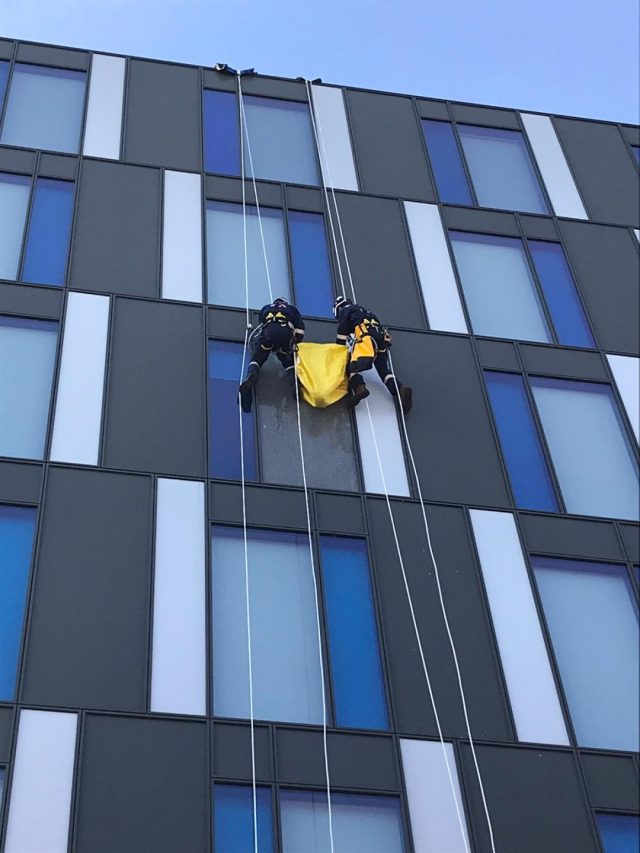
The UK construction industry constantly seeks innovative methods to improve safety, efficiency, and cost-effectiveness on projects. Rope access is a technique that has gained significant traction due to its numerous advantages over traditional access methods like scaffolding or cranes. This blog post explores the key benefits of rope access in the UK construction sector.
1. Enhanced Safety
Safety is paramount in construction, and rope access is one of the safest ways to work at height when executed according to the rigorous standards set by the Industrial Rope Access Trade Association (IRATA). Statistics show that rope access has lower accident rates compared to traditional methods. This is largely due to the extensive training and certification required for technicians, who are skilled in both their trade and in managing risks associated with working at heights.
2. Cost Efficiency
Rope access systems are quicker to install and dismantle than scaffolding. This speed not only reduces labour costs but also minimises downtime, allowing other construction activities to proceed uninterrupted. Additionally, the minimal equipment required for rope access reduces rental costs and the logistical expenses of moving heavy machinery.
3. Reduced Environmental Impact
The construction industry is increasingly under pressure to reduce its carbon footprint. Rope access is a low-impact technique that requires less equipment and energy compared to mechanical lifts and scaffolding. This reduction in equipment also means less noise pollution and less disruption to the surrounding area, which is particularly beneficial in urban environments.
4. Versatility and Access
Rope access provides solutions for reaching challenging areas that are otherwise difficult to access with traditional methods. Whether it’s high-rise buildings, bridges, or historical structures, rope access technicians can manoeuvre into tight spaces or at great heights without the need for intrusive supports or heavy machinery. This capability makes it ideal for a wide range of tasks including inspections, repairs, and external renovations.
5. Speed of Completion
The setup and dismantling times for rope access equipment are significantly less than for traditional scaffolding. This allows for rapid deployment and completion of work, which is especially useful in projects with tight deadlines or where access is needed only temporarily. The flexibility and quick mobilisation help reduce overall project timelines.
6. Increased Productivity
With fewer barriers to set up and dismantle, work can begin quickly and be completed faster using rope access. Technicians can focus more on the task at hand rather than on navigating the complexities of access, leading to higher productivity and better use of project time.
Conclusion
Rope access is transforming the way the UK construction industry operates. Its benefits extend beyond just safety and cost, influencing project timelines, environmental impact, and work efficiency. As construction projects become more complex and the demands on urban infrastructure increase, rope access offers a solution that meets the needs of modern construction challenges. Its adoption not only reflects a shift towards more innovative building methods but also a commitment to safety and sustainability in the construction industry.
For construction projects big and small, rope access is proving to be an indispensable tool, marking a significant evolution in how we think about and manage work at heights. Whether for maintenance, installation, or inspection, rope access is a superior choice that UK construction can no longer overlook.













